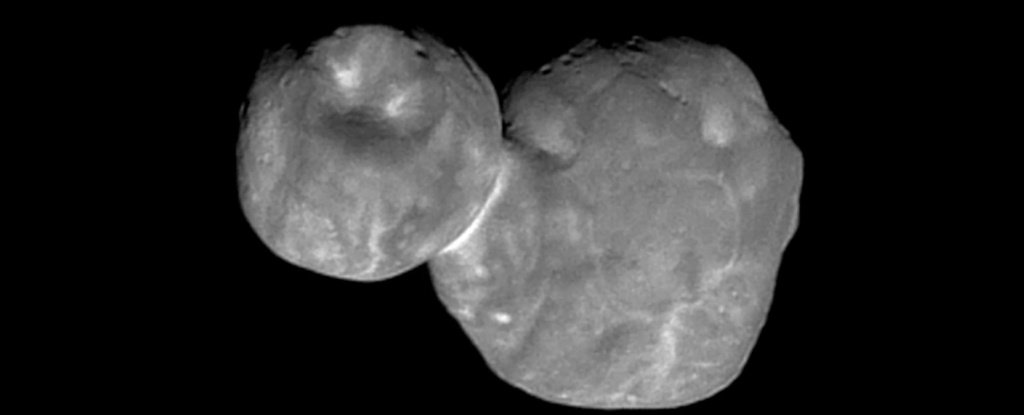Today's emphasis: how much remains to be understood about matters astronomical. And how much we continue to discover!
.jpg) |
| By Jove, that's hot! |
And recent estimates of the number of potentially habitable exoplanets may be due for a downward revision. Determinations of which exoplanets orbit within habitable zones (basically, the range around their respective stars in which water will remain liquid) depend on estimates of the absolute brightness (energy output) of the parent stars. There are several ways to mis-estimate a star's absolute brightness, and if you get it wrong, your estimate of the habitable zone will be off. Planets you thought orbited in the Goldlilocks zone might instead be too hot or too cold. See "Number of Habitable Exoplanets Found by NASA's Kepler May Not Be So High After All."
We tend to assume that the major features of our own Solar System (upper case because ours is specifically identified; "solar system" can refer to any star and its retinue) have been that way for eons. What kind of major features? How about, say, Saturn's rings?
Blat! Data gathered by the Cassini probe in its final days suggests Saturn's rings are actually only millions of years old (vs. more like 4.5 billion for the Solar System overall). Check out "Saturn's rings are surprisingly young: The first dinosaurs and mammals appeared long before the planet's stunning rings."
 |
| Ultima Thule |
Would you ever have expected there to be a celestial body shaped like a semi-deflated basketball mated to a pancake? And yet, that's more-or-less what NASA's New Horizons probe saw as it zipped past the Oort Cloud object informally known as Ultima Thule. As in: " 'We've Never Seen Something Like This Orbiting The Sun': Ultima Thule Is Still Weird." And what fun planetary astronomers will have imagining how such a thing formed, and how the resultant models bear upon how the more familiar planets and asteroids formed.
Moving on, Mars has largely been considered for decades (since the Mariner 4 flyby mission, back in 1965) to be a long-dead world. Only "long" and "dead" seem to be relative terms. As per: "Mars was volcanically active 'extremely recently': Claims for a subterranean lake imply the presence of magma, geophysicists say."
 |
| Beautiful (what we can see of it) |
And saving the best (IMO) for last, consider the mystery of the stuff we can't see at all. "Dark matter" is an hypothesized something often cited to explain otherwise inexplicable observed behavior of galaxies. More specifically, the visible matter (stars and nebulae) in galaxies and the generally accepted theory of gravity do not explain the observed rotations of stars both near to, and far from, galactic centers.
If there were lots of invisible (i.e., "dark") matter in galaxies, that unseen stuff, suitably distributed, could explain the observed "galactic rotation curves." Alas, while there has been theory after theory as to the nature of dark matter -- a veritable zoo of to-be-discovered exotic elementary particles -- every attempt to detect such things has failed. To the contrary: several theories as to the nature of dark matter have been ruled out by experiment. A minority of theorists have gone with an alternative hypothesis to explain the observations. They propose that at galactic scales (and larger), our understanding of gravity is mistaken. We should revise our notion of gravity, not keep supposing the existence of elusive, undetectable stuff.
The "dark matter" vs. "modified gravity" debate makes this recent observation fascinating. It appears two galaxies have been found whose rotational behavior can be explained solely by their visible matter. It would seem more likely these galaxies are missing something (i.e., the still mysterious dark matter) than that gravity works differently for a small subset of galaxies.
In short, you won't want to miss this: "Second ghostly galaxy without dark matter discovered, first confirmed. Ironically, by finding two galaxies severely lacking in dark matter, researchers have made a compelling case for the existence of the mysterious material."
If there were lots of invisible (i.e., "dark") matter in galaxies, that unseen stuff, suitably distributed, could explain the observed "galactic rotation curves." Alas, while there has been theory after theory as to the nature of dark matter -- a veritable zoo of to-be-discovered exotic elementary particles -- every attempt to detect such things has failed. To the contrary: several theories as to the nature of dark matter have been ruled out by experiment. A minority of theorists have gone with an alternative hypothesis to explain the observations. They propose that at galactic scales (and larger), our understanding of gravity is mistaken. We should revise our notion of gravity, not keep supposing the existence of elusive, undetectable stuff.
The "dark matter" vs. "modified gravity" debate makes this recent observation fascinating. It appears two galaxies have been found whose rotational behavior can be explained solely by their visible matter. It would seem more likely these galaxies are missing something (i.e., the still mysterious dark matter) than that gravity works differently for a small subset of galaxies.
In short, you won't want to miss this: "Second ghostly galaxy without dark matter discovered, first confirmed. Ironically, by finding two galaxies severely lacking in dark matter, researchers have made a compelling case for the existence of the mysterious material."

































No comments:
Post a Comment